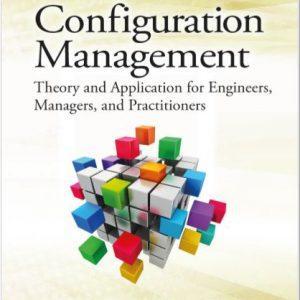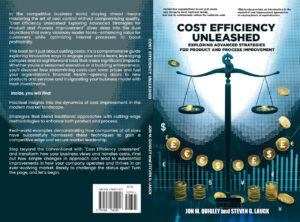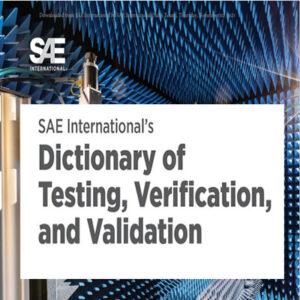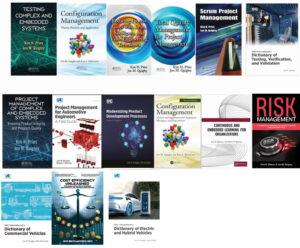Configuration Management in Manufacturing Equipment and Software: It Matters
What Is Configuration Management in Manufacturing?
Configuration management (CM) is a systematic process that ensures all aspects of a product—manufacturing equipment, software, or both—remain consistent with their original specifications and intended functionality throughout their lifecycle. In manufacturing, configuration management aligns the product’s performance, functional, and physical attributes with requirements, design, and operational information from conception to decommissioning.
Okay, if our manufacturing one never changes, perhaps what we have for the line setup will never change. For a host of reasons, that is not the case. A static line flies in the face of a continuous improvement approach. From experience, the product cost and the sale price are under pressure in ways that will require proactive approaches to improving the line, throughput, yield, or amount of waste from the line operation.
Why Maintain Configuration Management with Manufacturing Equipment?
Maintaining configuration management with manufacturing equipment is crucial for several reasons. Our line will be under pressure from experience to improve the value proposition. If you are in the automotive industry as a supplier, you will know that contracts often stipulate annual cost reductions. This may require adjusting the manufacturing line to achieve these cost improvements.
- Ensures Product Quality and Consistency:
- CM keeps every product iteration aligned with design and manufacturing requirements, reducing the risk of defects and rework. CM applies to the manufacturing line components, and not just the product. This documentation will be beneficial when we have to sort out malperformance on the line.
- This documentation provides a platform for engineers and maintenance personnel to support and for new talent to learn how the line is designed to work. I chat with young engineers fairly frequently about this specific problem.
- Enables Traceability:
- Every change, from hardware to software updates, is tracked, making it easier to trace issues back to their source and maintain a clear digital thread throughout the product lifecycle. This is important when we have made changes to the manufacturing line that lead to unintended outcomes, and can move back to the previous iteration.
- Through traceability, the substitution of suppliers or the discontinuation of line constituent components can be effectively determined. From experience, I can say that adding substitute parts or replacement parts can be very difficult. The substitute parts do not perform as well as the previous version.
- Supports Regulatory Compliance:
- CM helps organizations meet standards like ISO 9001 by formally recording all processes and changes, simplifying audits and regulatory checks.
- Regulatory compliance requires that we understand and can control the output of the manufacturing line – this is difficult to do when we do not know how the line works.
- Reduces Costs and Delays:
- CM minimizes errors, production delays, and costly recalls by preventing unauthorized changes and miscommunication.
- CM, coupled with a continuous improvement ideology, reduces waste and controls throughput. It allows us to experiment with confidence.
- Facilitates Collaboration:
- CM centralizes documentation, ensuring all teams—engineering, procurement, manufacturing, and service—work from the same, up-to-date information.
- Provides a standard mental model supported by evidence for all team members developing and supporting the manufacturing line (engineers, technicians, process managers).
- Enables compelling exploration of manufacturing line updates or alterations to respond to new product versions.
- Basis for AI:
- Our configuration management and other systems documentation can feed our internal AI, aiding the development of future manufacturing lines (continuous learning).
What Happens When Configuration Management Fails?
When configuration management is neglected or breaks down, the consequences can be severe. The discipline of CM applies to the products and systems produced from the manufacturing line.
- Misaligned BOMs and Documentation:
- Disconnected systems lead to errors in bills of materials (BOMs), causing production to build the wrong equipment version.
- This applies to manufacturing line equipment, including end-of-line test fixtures and products.
- Documentation aids in future development lines, providing a known baseline.
- Production Delays and Cost Overruns:
- Late-stage redesigns, supply chain disruptions, and unexpected costs become common as teams scramble to correct mistakes.
- Ad hoc changes to the manufacturing line from material to parameters (i.e. time spent in a process segment, heat applied).
- Quality and Compliance Issues:
- Inaccurate or missing configuration data can result in products that fail quality checks or regulatory requirements, leading to recalls and reputational damage (both product and manufacturing processes)
- Difficulty in Troubleshooting:
- Without traceability, identifying the root cause of failures in the field is nearly impossible, which increases warranty costs and customer dissatisfaction.
- Operational Inefficiencies:
- Teams work in silos, miscommunication increases, and resources are wasted on rework and firefighting instead of innovation.
“On the manufacturing line, configuration management is the only thing standing between us and building a car with three left doors and no steering wheel.”
— Popular saying among plant engineers
Configuration Management and End-of-Line Testing
End-of-line (EOL) testing is the final quality assurance step before products leave the manufacturing floor. Configuration management plays a critical role here.
- Verifies Correct Configuration:
- EOL testing checks that the equipment’s hardware and software match the intended configuration, ensuring only compliant products are shipped.
- EOL testing often provides checks of the product’s basic functional performance. As the product is updated, the EOL testing may require updating.
- EOL testing will also require CM.
- Tracks Firmware and Software Versions:
- CM ensures that the correct firmware and software are installed and logged, which is vital for troubleshooting and future updates.
- Supports Data Logging and Analysis:
- CM enables the collection and analysis of test data, helping identify recurring issues and drive continuous improvement.
- Prevents Test Failures Due to Misconfiguration:
- Without CM, EOL tests may fail or produce inconsistent results because the product under test does not match the expected configuration, leading to delays and increased costs.
Modern EOL testing often uses specialized software integrated with CM systems, allowing automated, accurate, and traceable testing processes. This integration ensures that any issues detected can be quickly traced back to their source, whether in design, manufacturing, or software deployment.
Configuration Management Software for Manufacturing Equipment
Manufacturing relies on a variety of software to manage configuration. Some examples include:
- Product Lifecycle Management (PLM): Manages product data and BOMs across design, engineering, and manufacturing.
- Computerized Maintenance Management Systems (CMMS): Tracks maintenance activities, spare parts, and equipment history to ensure uptime and compliance.
- Manufacturing Execution Systems (MES): Connects real-time production data with design and configuration records.
- End-of-line testing Software Integrates with CM to automate testing, collect data, and ensure traceability for every product leaving the line.
Conclusion
Configuration management is a technical necessity and the backbone of quality, efficiency, and compliance in manufacturing equipment and software. Organizations face increased costs, delays, quality failures, and regulatory risks without it. With strong configuration management—especially integrated with end-of-line testing—manufacturers can ensure every product meets specifications, trace issues quickly, and
For more information, contact us:
The Value Transformation LLC store.
Follow us on social media at:
Amazon Author Central https://www.amazon.com/-/e/B002A56N5E
Follow us on LinkedIn: https://www.linkedin.com/in/jonmquigley/
https://www.linkedin.com/company/value-transformation-llc
Follow us on Google Scholar: https://scholar.google.com/citations?user=dAApL1kAAAAJ






